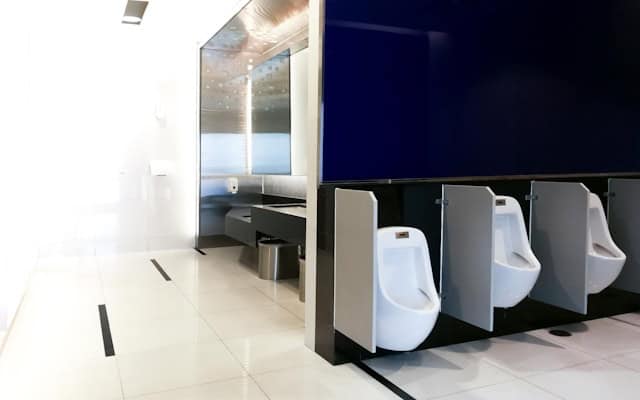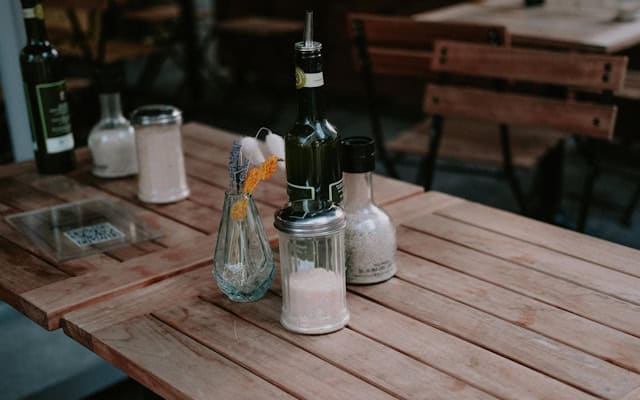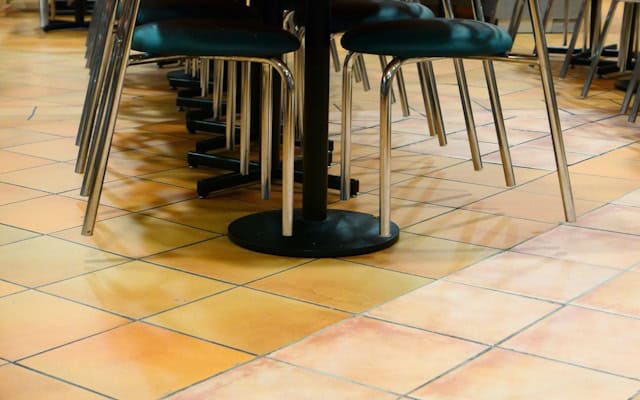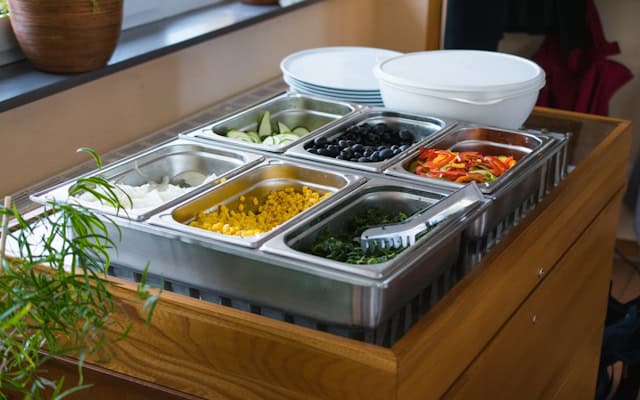When dining out, we often focus on the culinary experience and ambiance, seldom considering the unseen elements that could impact our health. However, restaurants, regardless of their cleanliness standards, can harbor hidden germs in various places. From the menus we handle to the seats we sit on, microorganisms can lurk in unexpected spots. Understanding where these germs are commonly found is crucial in adopting simple habits to protect ourselves. In this article, we will uncover the 15 dirtiest things in every restaurant, helping you stay informed and dine more safely.
Restroom Door Handles and Faucets
Restroom door handles and faucets are breeding grounds for harmful bacteria, with a study showing that they can harbor up to 40,000 germs per square inch. With multiple people touching these surfaces throughout the day, it’s no surprise that they are hotspots for germs. To avoid picking up any nasty microorganisms, always use a paper towel when exiting the restroom and consider using hand sanitizer before returning to your table.
The Menu
The menu is often the first thing we handle when entering a restaurant, making it a hotspot for germs. In fact, research has shown that menus can contain up to 100 times more bacteria than a toilet seat! This is mainly due to the fact that menus are rarely cleaned and are handled by multiple people throughout the day. To avoid potential contamination, consider sanitizing your hands after handling the menu or simply using an alcohol-based wipe before perusing the options.
Tabletops and Condiment Holders
Next on our list of hidden germ hotspots are tabletops and condiment holders. These surfaces are frequently touched by customers and are rarely cleaned between each use, making them a breeding ground for bacteria. In addition, condiments like ketchup and salt shakers can also harbor germs from multiple handling. To minimize your exposure to these germs, consider wiping down the table with disinfectant wipes before sitting down to eat and avoid sharing condiments with others.
High Chairs and Booster Seats
For families dining out with young children, high chairs and booster seats may be a necessary accessory. However, these items are often overlooked when it comes to cleaning protocols in restaurants. As a result, they can harbor a variety of germs from previous patrons. To protect your child, consider bringing your own portable high chair or wiping down the seat with disinfectant wipes before use.
Floor and Carpeting
While most restaurants have a regular cleaning schedule for their floors, it’s important to note that even the cleanest-looking floors can harbor bacteria. This is especially true for carpeted areas, where spills and food particles can easily hide in the fibers. To minimize your exposure to these germs, avoid placing bags or personal items on the floor and consider wearing shoes rather than going barefoot.
Hand Dryer
After washing your hands in the restroom, you may reach for the hand dryer to dry them. However, it’s important to remember that these hand dryers are also touched by multiple people throughout the day and can harbor germs. To avoid picking up any additional bacteria, use a paper towel or your own personal hand towel to dry your hands instead.
Lemon Wedges
While adding a lemon wedge to your water or soda may seem like a harmless act, it can actually introduce harmful bacteria into your drink. A study conducted by ABC News found that nearly 70% of lemon wedges collected from various restaurants contained traces of fecal matter. This is often due to the fact that lemons are handled by multiple people and may not be properly washed before use. To avoid consuming these germs, consider skipping the lemon wedge or squeezing it over a napkin first.
Utensils
While restaurants are responsible for cleaning and sanitizing their utensils, it’s important to remember that they can still harbor germs if not properly handled. This is especially true for buffet-style dining where utensils are shared among multiple customers. To protect yourself, consider using a hand sanitizer before and after handling utensils or ask for freshly cleaned ones.
Glasses and Cutlery
Similar to utensils, glasses and cutlery can also harbor germs from previous patrons if not properly cleaned. In addition, lipstick stains on glasses may be visually unappealing but could also indicate the presence of bacteria. To minimize your exposure, consider using disposable utensils or ask for freshly washed glasses and cutlery.
Ice
Ice may seem like a harmless addition to our drinks, but it can actually harbor bacteria from the ice machine or contaminated hands. In addition, ice scoops are often stored in containers with other kitchen tools, increasing the chances of cross-contamination. To stay safe, consider asking for drinks without ice or using a straw to avoid contact with the ice.
Tablecloths and Napkins
Tablecloths and napkins may seem clean on the surface, but they can actually harbor germs from multiple handling and food spills. In addition, they are often not changed between each customer, increasing the chances of cross-contamination. To protect yourself, consider using a paper napkin or bringing your own reusable cloth napkin to avoid contact with potentially contaminated surfaces.
Salad Bar Tongs
Salad bars may seem like a healthy and safe option, but that may not always be the case. The tongs used to serve food in salad bars are often handled by multiple customers without being washed in between. This means that any germs on their hands can easily transfer to the utensils and onto your food. To minimize your exposure, consider using a clean plate for each trip to the salad bar or asking for freshly cleaned tongs.
Reusable Containers and Bags
With the increasing popularity of takeout and food delivery services, more people are utilizing reusable containers and bags. However, these items can harbor germs from multiple uses if not properly cleaned. To protect yourself, make sure to thoroughly wash these containers and bags after each use or consider using disposable options.
Booths and Seats
Booths and seats may seem like an unlikely place for germs to hide, but they can actually harbor bacteria from previous customers’ sweat, oils, and skin cells. To minimize your exposure, consider using a disinfectant wipe on the seat and table before sitting down or bringing your own portable seat cover.
Cash Registers
Last but not least, cash registers can also be a hotspot for germs due to the frequent handling of money and cards by multiple people throughout the day. To protect yourself, consider using contactless payment methods or wash your hands after handling money or touching the card reader.
By being aware of these 15 hidden germ hotspots in restaurants, you can take simple steps to protect yourself and your loved ones while dining out. Remember to practice good hand hygiene, avoid sharing items with others, and consider bringing your own sanitizing wipes or utensils to minimize the spread of germs. Enjoy your meal safely!
However, it’s important to note that while these hidden germ hotspots may pose a potential risk, there are also measures in place to ensure cleanliness and sanitation in restaurants. Health codes require regular cleaning and disinfection protocols for restaurant staff, and many establishments have implemented additional safety measures in light of the recent pandemic. By following these tips and being aware of potential germ hotspots, you can still enjoy dining out without compromising your health. Bon appétit!










